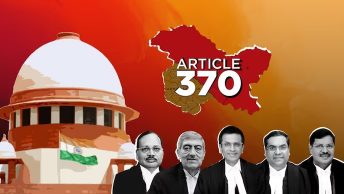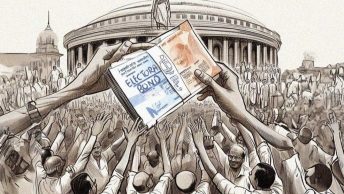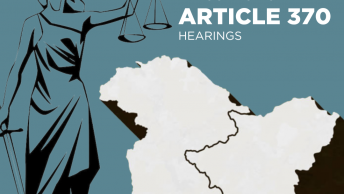The book “Supreme Court of India – The Beginnings” is a study of the role of the Federal Court in India, which was the precursor to the Supreme Court, and the initial years of the Supreme Court. The work of Prof. George Gadbois, is highly pertinent to the scholarship on the Indian judiciary and will remain so for years to come. This book has been edited and introduced by Mr. Vikram Raghavan and Mr. Vasujit Ram.
Before dealing with the newly released book, it is important to refer to Prof. Gadbois’ earlier works concerning what he termed as the ‘Paramount Judiciary of India’. Institutions are only as good as the individuals who comprise them and the Indian Judiciary is no exception to this truism. No individual can be completely divorced from his or her experience and background and the same influences his or her role in life – this is particularly true of judges also. There existed very limited scholarship touching upon the biographical details of the judges of the Indian Supreme Court until Prof. Gadbois’s book “Judges of the Supreme Court of India” was published in the year 2011. This book was the result of great endeavour and scholarship by Prof. Gadbois. The approach taken by the book is based on the appointments made during the period of respective Chief Justices, and indeed imparts significant insights on the Indian judicial system.
The life sketch of the judges, as given in the book, covers almost their entire life and even includes facets of their post-retirement life. To create these, Prof. Gadbois undertook a thorough study of the background of almost ninety judges and personally interviewed the judges during the studies to further confirm his portrait of the judges.
His book “Judges of the Supreme Court of India” is outstanding for two primary reasons: firstly, in addition to the objective details set out, Prof. Gadbois’s subjective assessment of the judges whom he met is well-measured, balanced and is therefore, a fair assessment. The aggregation of objective details conveys important aspects of the judge as a person. his response was, “it’s easy to write about institutions, policies and the like, but very difficult to write about named individuals”, a difficulty he had successfully surmounted.
Secondly, the book has attained a special position for itself owing to the insight it provides on the system of appointment of judges in India. The chapter of the book dealing with “Archetypal Judge” reveals the results of the extant system of appointment of judges, which is an important assessment of the system itself. Towards the end of the book, Prof. Gadbois remarked that the judges brought a reputation of integrity and rectitude to the Supreme Court, and that India would not have been a vibrant democracy without them. This is a great tribute to the Supreme Court.
The newly released book, “Supreme Court of India – The Beginnings” is also significant for similar reasons. The book summarizes the evolution of the Paramount Judiciary in India from 1921 to 1964. In his summary and conclusions, he has highlighted at least ten events which are of special importance. One of the milestones discussed is the inauguration of Federal Court in 1937. One cannot underestimate the role of the Federal Court while speaking about the Indian judiciary. The Federal Court was constituted under the Government of India Act, 1935. It had rendered several decisions which paved the way for the Supreme Court, particularly in the realm of distribution of legislative powers.
Prof. Gadbois mentions that it handled only twenty-seven decisions and two advisory opinions over its first four and one-half years. But in April 1942, the Federal Court pronounced the first of a series of decisions in which it either boldly struck down provisions of the infamous sedition, preventive detention and special criminal court ordinances and legislations, or declared that the executive had not acted within the limits of its authority. These decisions are proof of the impartiality, independence and resolve of the Federal Court, and they served to inspire a high degree of confidence in the Court.
Nevertheless, the decisions of the Federal Court could be appealed against before the Privy Council. For this reason, another event of great significance, according to Prof. Gadbois, was the replacement of the Federal Court with the Supreme Court in 1950 when the Constitution of India was enforced. He discusses the cases of AK Gopalan v. State of Madras and State of Madras v. Srimathi Champakam Dorairajan. The latter, he says, must be regarded as one of the most important decisions rendered by the Supreme Court, as it was the first judgment to involve both fundamental rights and directive principles. The court had in its decision enforced the fundamental rights over the directive principles while describing the fundamental rights as ‘sacrosant’ and the directive principles as ‘subsidiary’. The tenth and final development discussed by Prof. Gadbois is the Supreme Court’s shift toward a more liberal interpretation of the Constitution, which became perceptible since the late 1950’s.
In the chapter titled “Judicial Review in a Modern Democratic Welfare State,” Prof. Gadbois raised two important questions. Firstly, what is the most important function which the Supreme Court of India should perform in an aspiring modern welfare state? Secondly, how can the Court perform this function most effectively, while at the same time maintaining, if not increasing, its role in the political system?
The single most important and most difficult function for the Supreme Court of India to perform in the foreseeable future is that of reconciling freedom and justice of the individual with the needs of a modern government which exercises a high degree of control over the individual, charged with the promotion of far-reaching social and economic reforms. The framers of the Constitution having included in it a list of fundamental rights as well as the goals of a welfare state, the Supreme Court’s major function and responsibility is to seek to establish the most proper and equitable balance between the legitimate rights of the individual and the needs of the Government. There is, of course, no more difficult task for any court to perform in any modern state than that of reconciling individual rights with the public interest, as defined by the legislatures and executives. Under any circumstances it calls for judicial statesmanship of the highest order.
Similarly, the Court should acknowledge that while interpreting the Constitution and legislations, it must grapple with the stresses and strains of a changing society, and that it must make choices between conflicting values. In the words of Cardozo, “the great tides and currents which engulf the rest of men, do not turn aside in their course, and pass the judges by.” In short, it should be recognized that a great deal of discretion is available in constitutional and statutory interpretation, that the Court can restrict or expand a provision, and that its task is much more than a purely technical one.
The Indian Supreme Court simply cannot afford to ignore the dominant values of the society, or what Holmes termed as the “felt necessities of the times.” Indeed, in order to maintain its institutional importance, it must be attuned to the values of the majority and seek to exercise its functions in harmony with these accepted values. Finally, but importantly, the Court must distinguish between constitutional and statutory interpretation, and give the Constitution a markedly more imaginative and liberal interpretation.
These aspects throw light on the keen foresight that Prof. Gadbois had about the role of the Indian Supreme Court.
Justice BV Nagarathna is a judge at the High Court of Karnataka. This speech was given at the event of the book release in Bangalore and has been transcribed by Vishal Rakhecha.







Thank you for your sharing. I am worried that I lack creative ideas. It is your article that makes me full of hope. Thank you. But, I have a question, can you help me?